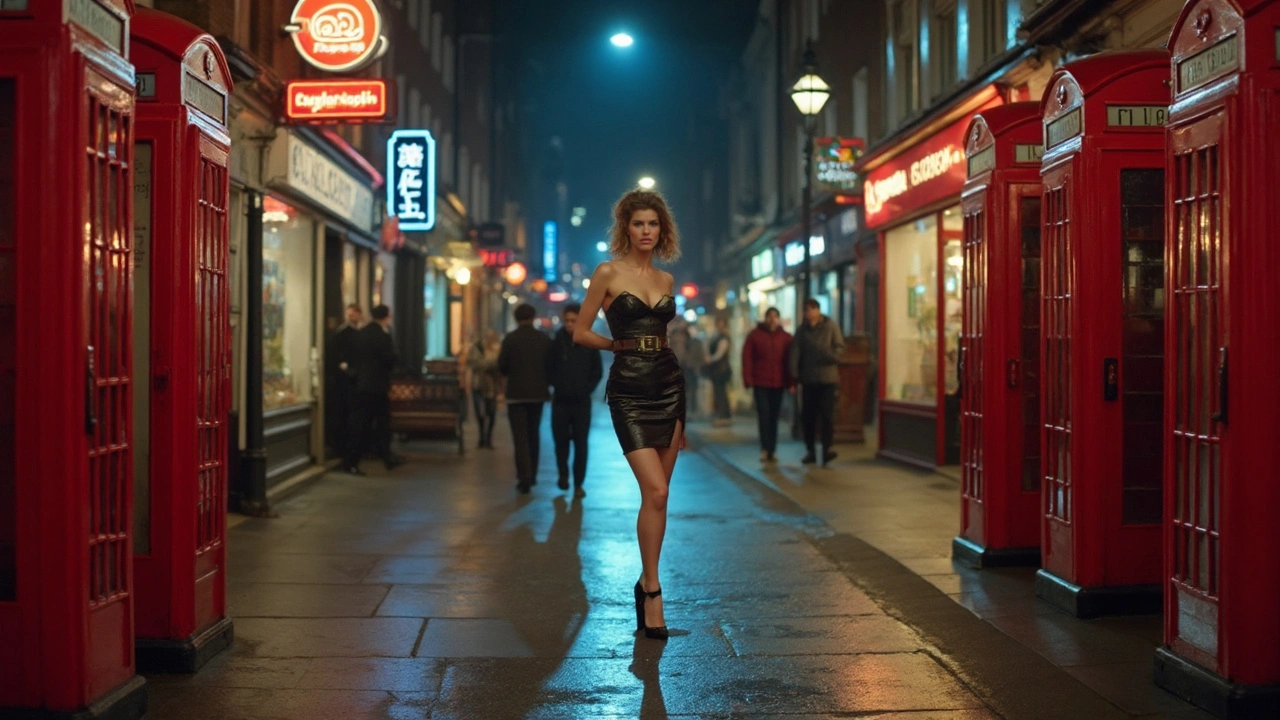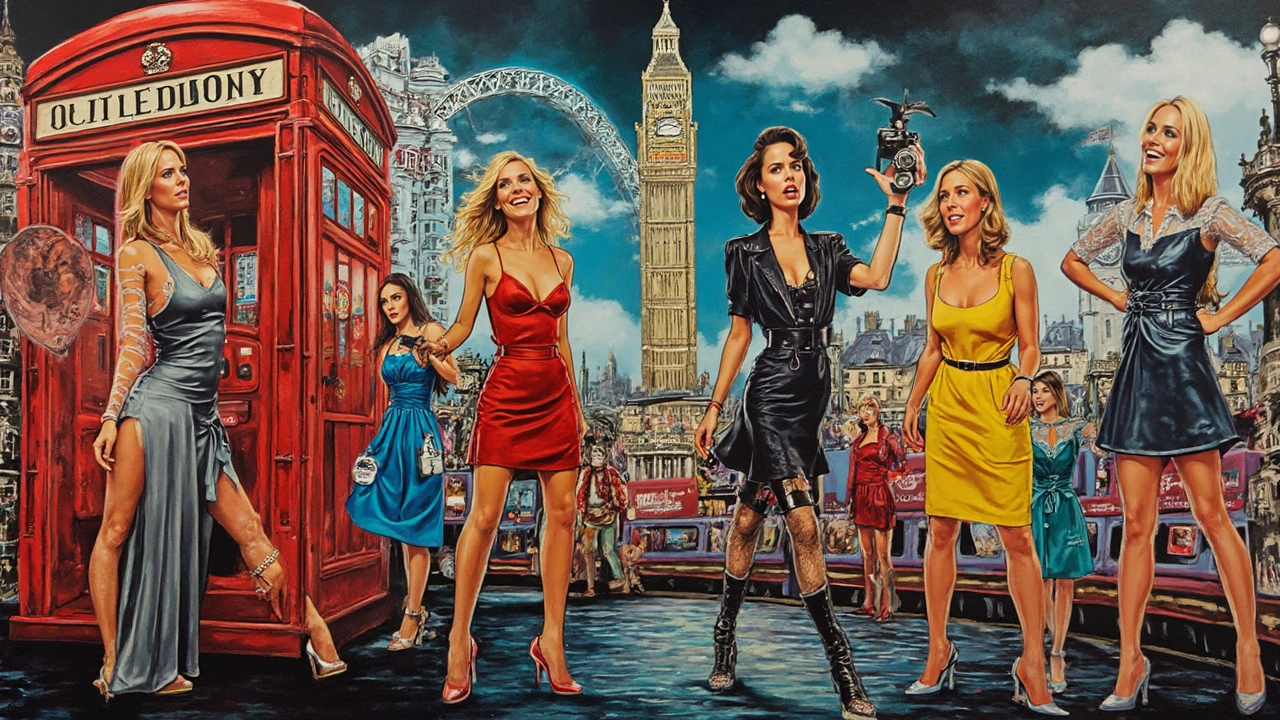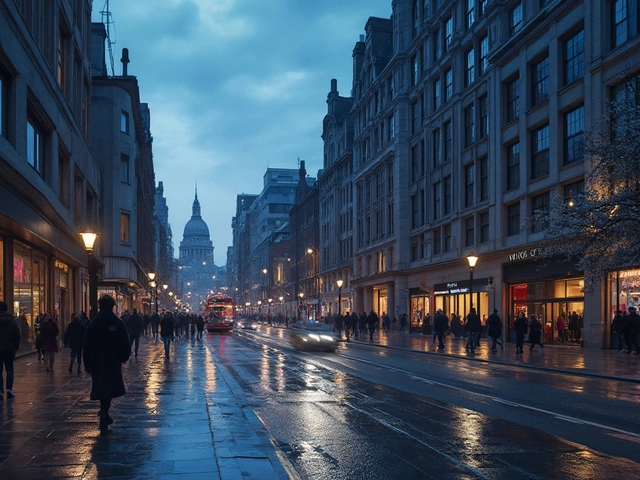Inside London's 1980 Call Girl Scene: A Glimpse Back

- Landon Zephyr
- 16 March 2025
- 0 Comments
The 1980s in London were a time of contrasts, where glitz and grit existed side by side. Among the city's many vibrant scenes was the call girl industry, a world often shrouded in mystery and misconception. So, what exactly was it like back then?
Call girls, distinct from street sex workers, operated in a nebulous mix of professional autonomy and societal stigma. They offered companionship and more to affluent clients, often from the comfort of high-end hotels or discrete private residences. But it wasn't all glamorous — understanding the socio-economic backdrop helps clarify why many women were drawn to this path.
- The Scene in 1980s London
- Socio-Economic Factors
- Day in the Life of a Call Girl
- Challenges and Risks
- Legacy and Changes Over Time
The Scene in 1980s London
The 1980s were a transformative time for London, marked by big social changes, economic shifts with Thatcher’s policies, and cultural revolutions. The call girls here had their own evolving ecosystem, thriving in a city buzzing with nightlife and opportunity. These women were often seen frequenting upscale areas like Mayfair and Knightsbridge, mingling with the city’s elite.
The scene was influenced by a mix of glamor and grit. Think neon-lit streets, bustling clubs, and extravagant parties. Media had begun to paint a picture of excess during this decade, with prime trends focused on wealth and opulence. Within this setting, the call girls blended in as both participants and observers, being part of but also distinct from mainstream society.
Back then, the industry was less digitized—no websites or apps to promote services. Connections were mostly made through discreet ads in papers like The Evening Standard or via word-of-mouth referrals from well-heeled clients. Some call girls operated through agencies, while others worked independently, wielding more control over their work and schedules.
The Clientele
The clients were often businessmen and high society figures looking for companionship to complement their lifestyle. The allure of a call girl was not just in physical appearance but also in the sophistication they offered, being able to engage in conversations that transcended typical social boundaries. The wealth gap starting to widen made these services especially popular among those flush with cash from booming industries and new financial ventures.
With constant interactions across cultural backdrops, the job sometimes turned into an unwitting seminar in sociology and economics, giving the women a unique perspective on the world around them.
Socio-Economic Factors
In the backdrop of London's 1980s call girl scene was a complex maze of socio-economic reasons that led many women to this profession. At this time, the United Kingdom was grappling with significant changes. The economy was undergoing a transformation with shifts from manufacturing industries to services, leading to job losses in traditional sectors. This spurred many to seek alternative forms of income, including working as London call girls.
Margaret Thatcher’s policies during her time as Prime Minister significantly impacted the economic landscape. While some prospered, creating a wealthy clientele for call girls, others found themselves squeezed financially. Women, particularly those needing to support families without male partners or supplement their income, saw sex work as a viable option due to the higher pay compared to other jobs.
Moreover, the cultural climate was shifting. Urban areas were buzzing with nightlife, creating opportunities for sex work to flourish. The rise of the 'Yuppies'—young urban professionals with disposable income—meant there was a demand for the services of call girls, often dressed up as 'companionship' for social and business events.
Impact of Media and Pop Culture
The glamorization of sex work in media also played a role. Films and magazines sometimes depicted the life of a call girl as one filled with luxury and excitement, making it more appealing despite its challenges. However, this representation was often far from reality.
The combination of these socio-economic factors set the stage for the 1980s call girl industry in London, drawing women into a world that, while offering financial benefits, also demanded navigating complex societal judgements and legal grey areas.

Day in the Life of a Call Girl
Being a London call girl in the 1980s was a unique blend of hustle, risk, and navigating an underground world within a bustling city. Start off by imagining a typical day for many call girls during this era. It often began in much the same way as anyone else’s – breakfast, coffee, maybe a jog through the park. Keeping fit and maintaining appearances were crucial.
However, by the afternoon, it was a whole different world. Many call girls arranged their meetings during the day to avoid the riskier nighttime activities associated with street work. Clients could range from tourists to local businesspeople, looking for discretion and companionship during their stay in London. Phone calls or contacts were primarily made through intermediaries or classifieds, adding a layer of separation between the worker and the client.
Managing Time and Safety
Time management was essential, juggling appointments and personal time while maintaining a roster of regular clients. Safety was always on their minds. Many would insist on meeting in reputable hotels where staff were discreet yet vigilant, adding a layer of security.
Emotional and Social Aspects
Emotionally, the job was demanding. Call girls had to balance the facade of companionship while often repressing personal feelings. Some found solace in close-knit communities of other sex workers, sharing tips and tricks for staying safe and dealing with difficult clients.
The evening could lead to social meetups or briefings, staying updated on client backgrounds and preferences. The ability to navigate this complex social web was crucial for staying in demand.
A Snapshot of Earnings
Financially speaking, the work could be lucrative, though not without its challenges. Call girls could earn between £50 and £200 per appointment, which was a significant amount back then. But the nature of the work also meant there were downtimes, and the need for financial savvy was key to sustaining a stable life.
This vibrant, if sometimes precarious, lifestyle required balancing professional appeal with personal safety and sanity. Yet, for many, it was a path that offered a level of financial independence and flexibility that was hard to find elsewhere during the economic climate of the time.
Challenges and Risks
Operating as a call girl in London in the 1980s wasn't all glitz and glam. Behind closed doors, there were real challenges and risks that women in this line of work faced daily. It was a time when the legal landscape was murky, at best. While selling sex in itself wasn't illegal, soliciting or managing was, putting many call girls in precarious situations.
Safety Concerns
Personal safety was a major concern. Meeting strangers in secluded locations always presented risks. Back then, mobile phones weren't widespread, so staying in touch with friends or having a quick emergency plan was tougher. Many relied on gut instincts or the support of trusted networks to navigate these dangers.
Health Issues
Maintaining health was another big issue. The HIV/AIDS crisis was escalating in the 1980s, hitting the sex industry hard. Access to accurate information and resources was limited, so many in the industry faced significant health risks without sufficient support.
Legal and Social Pressures
There was always the looming threat of police raids or arrests. Though prostitution was technically legal, the associated activities often led to arrests. Plus, societal stigma made it challenging to talk openly about these pressures, adding another layer of stress.
The risks were real, but so was the resilience of those involved. For many, this line of work was catapulted by necessity, a way to find financial stability during shaky economic times. Despite the hurdles, the 1980s call girl scene carved out its place in London's complex social tapestry.

Legacy and Changes Over Time
The world of London call girls in the 1980s has left a lasting imprint on modern sex work. Back then, the industry was heavily influenced by pop culture, with edgy music videos and provocative films often romanticizing the lifestyle. This mix of glamour and risk painted a picture that's still influencing perceptions today.
Fast forward to now, and the legacy of the 1980s scene can be seen in the ongoing evolution of the industry. Laws and social attitudes have shifted, aiming to offer more protection and rights for sex workers, though challenges remain.
One of the biggest changes? The digital transformation. In contrast to the days of personal ads and landline calls, today's call girls often use the internet to advertise their services. This shift has opened up the market, allowing for greater anonymity and control over their work conditions.
Statistics from the UK's Office of National Statistics reveal that the number of people engaging in sex work has increased since the 1980s, partly due to economic factors. The growth of online platforms has also contributed significantly, altering how services are marketed and booked.
Modern Challenges
Despite progress, modern call girls face many of the same issues as their 1980s counterparts, such as safety and legal ambiguity. Efforts to improve conditions through legislation and advocacy continue, with mixed results.
Thus, while the industry has come a long way since the 1980s, the need for ongoing dialogue about sex work's place in society remains crucial. Understanding its legacy helps in shaping a more informed and fair future for those involved.


